Fans of organics often ask how to feed cucumbers with chicken droppings on the site. Fears are caused by the uric acid it contains, which adversely affects the roots. The second problem is that it is saturated with easily assimilated nitrogen. Even in insignificant volumes, droppings accelerate the growth of green mass, slowing the development of fruits.
Content
On the advantages and disadvantages
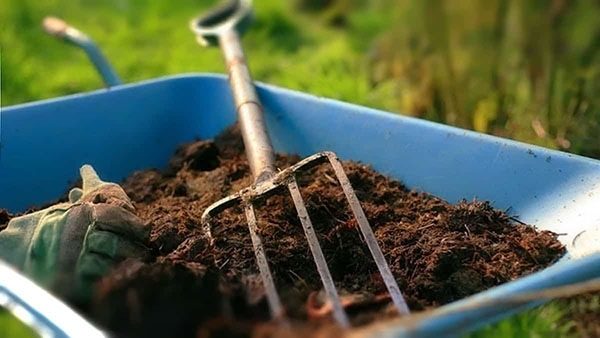
Chicken manure, unlike cow manure, is saturated with a large number of substances that accelerate the development of a vegetable. Botanists came to the conclusion that the feces product of the birds is rightly attributed to complex feeding. During the first year of seedling development, the litter saturates the soil with mineral elements. Positive changes are noticeable in several directions:
- soil structure improvement;
- quickly dissolves in wet soil;
- activation of intensive growth;
- yield increase.
Before you feed the planted cucumbers with chicken droppings, you should take a look at the “back of the coin”. The first "minus" is a significant level of acid concentration. The second drawback is the presence of seeds of weed green spaces. If the litter is taken on the street, then it can be infected with pathogens.
We prepare the solution ourselves
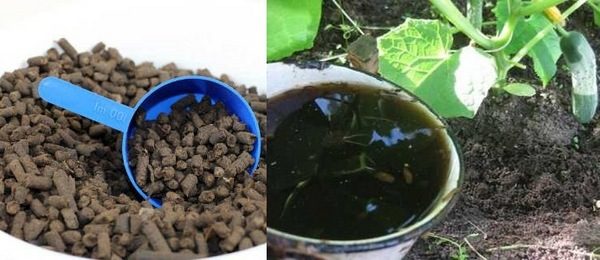
Chicken droppings are bought or made on their own. The latter option has gained great popularity. The summer resident is confident in the absence of ready solution impurities.
| Technology | Description | Note |
|
Method fermentation |
To start a chemical reaction, enzymes are needed, installation. The latter controls the fermentation process. The technology is in demand in farms where cucumbers are grown in industrial volumes. For each 1 m² take 4 kg of dry litter. The substance is placed in a deep, closed container. It is poured with water in a ratio of 1 part of the litter to 20 parts of water. The container is closed, put for 3 weeks in a dark room |
Feeding cucumbers in this way on "six hundred parts" is not worth it. For a private compound, the method is unreasonably expensive. For 3 weeks, monitor the state of the fluid. The process is considered completed only after new bubbles do not appear on the surface |
| Infusion | For cooking, take rotted litter. Dosage - for every 1 m² up to 4-5 kg of substance is required. It is placed in a deep container and filled with water. The ratio is 1:20. The container is closed and put in a cool, warm place for 48 hours. The finished product is rich in nitrogen, so it is used at the beginning of the growing season | A simpler option is to saturate the vegetable with nutrients in indoor and outdoor |
| Soaking | Take fertilizer and put into a deep container. Pour water. After 12 hours, the fluid is replaced with fresh. The procedure is repeated every 12 hours for 1.5 days. For cooking, you need 3 kg of litter per 1 m² | Feed seedlings with bird droppings when organics are too fresh. The second reason to resort to soaking is the desire to reduce the level of concentration of uric acid |
Litter in granules is sold in stores for goods for summer residents. It, like natural, contains potassium, magnesium, phosphorus, calcium, zinc and so on. The only caveat - the litter in the granules is too concentrated. It is bred with a significant amount of water. Summer residents prefer the granular variety to the traditional type because of its advantages. The nutritional composition has been heat treated. You can safely feed seedlings, not being afraid that the litter of pathogens in the litter.The second plus is the absence of an unpleasant odor.
Greenhouse application rules
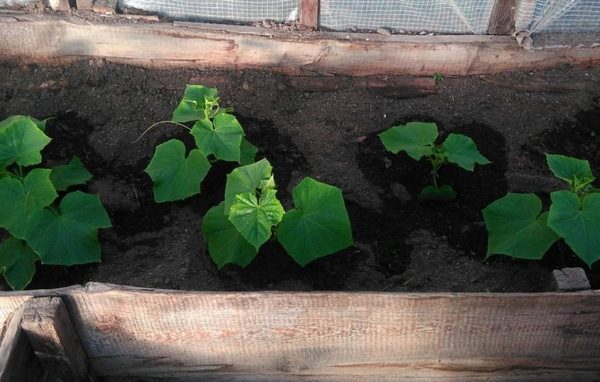
Litter in granules is pre-diluted with 50 parts of water 1 part of the substance. To add nutrients to adult vegetables, the solution is diluted even more. For 100 parts of water only 1 part of granules is required. There should be no errors. Too concentrated solution will provoke a burn of seedlings. The described scheme is relevant for open ground and for top dressing in a greenhouse.
It is necessary to fertilize the cucumbers in the greenhouse on their own with a different method. The first application is carried out at the stage of disembarkation. The working solution is poured directly into the wells, and then the seedlings are rooted. Complete the landing by irrigation with clean water.
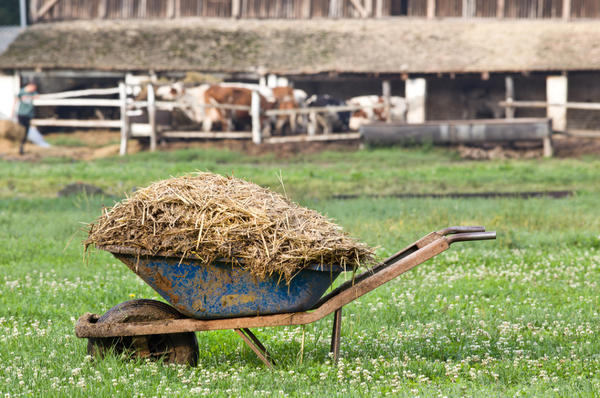 You may be interested in:
You may be interested in:Further actions:
- At the vegetation stage, the introduction of nutrients is preceded by mandatory irrigation with clean water. This is necessary to reduce the saturation of the working solution. At least three liters of clean water are poured under each bush.
- Once rooting has taken place, nutrients are introduced from the moment buds begin to form. The solution is poured strictly between the rows, and not under the root. The next introduction of nutrients is carried out from the moment the fruit develops.
You can not make litter often. To a greater extent, this applies to self-pollinated varieties of cucumber.
Outdoor application
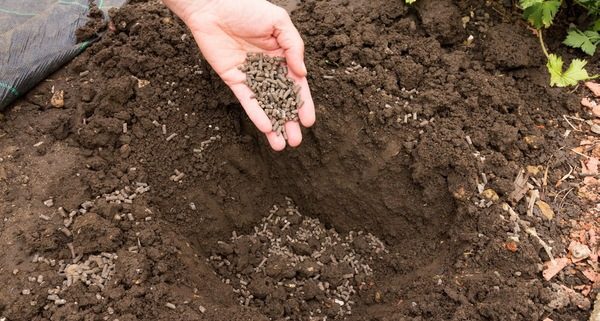
Feeding with seedlings is carried out 14 days after the first application of mineral fertilizers or organics. If the deadlines are met, then the likelihood of empty flowers is reduced. In areas with insufficiently fertile soil, preparation is carried out. In the autumn, litter is laid in the ground in a dry form.
Buried litter triggers a physical and chemical reaction in the soil. In the spring, when the time comes for planting seedlings, the soil will become more fertile. The recommended dosage is 550-600 g of substance per 1 m². Litter is scattered over the entire area of the beds. The second step is to distribute it evenly with a rake.
Recommendations for beginners
The first rule is top dressing of cucumbers Fresh or granulated chicken droppings are prohibited. At the slightest contact with the surface of the seedlings leads to the destruction of cells. It is allowed to take a slightly concentrated solution. The second rule - before making the composition is made less caustic. For this, the diluted mixture is placed in an open container in fresh air. After 3-4 hours, the level of uric acid concentration will decrease. Other recommendations:
- happen that during irrigation some of the fertilizers still appear on the leaves or on the stem, it is immediately washed off with a large amount of clean water;
- making litter in dry and liquid form is carried out only with gloves, in a protective mask and a special suit;
- after processing, gloves are destroyed, otherwise there is a high risk of introducing pathogens during repeated fertilizer application.
Watering is carried out in the morning or in the evening. Heat adversely affects the level of nutrient concentration in the litter.
Reviews
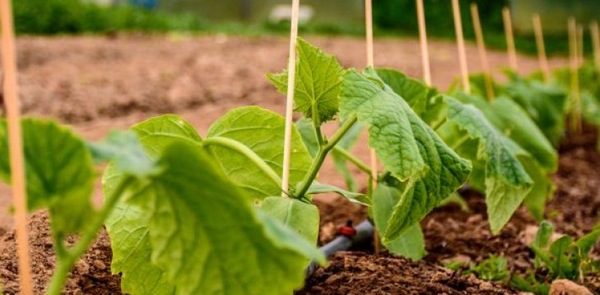
Igor
I apply a granular form on the site. It is pre-processed. Feeding plants will not have health problems. I always breed it in a ratio of 20: 2. I take more water to reduce the saturation of the solution.
Diana
The natural version is most effective. I’m preparing the tincture like this. For each "square" take up to 5 kg. I water strictly between the rows. The result - on fertilized soil, cucumbers grow almost without empty flowers.
Tamara
I do not dare to feed my cucumbers on sandy soil.Nutrients just go to the ground. Waste of time.
The normalized use of litter on the site leads to the active development of the fruit. The task of the summer resident is to dilute the product so as to significantly reduce the degree of saturation of the solution. After a few days, you can safely water the seedlings. The schedule for making nutrients depends on the variety of cucumbers, the stage of their development.

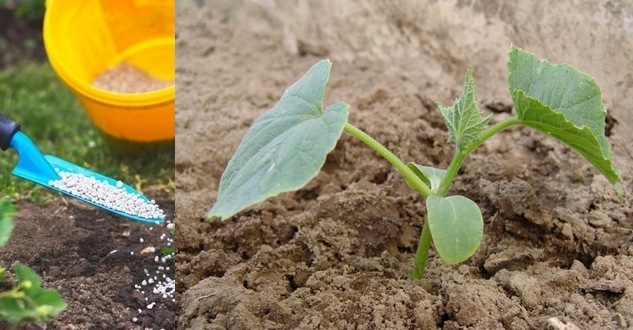
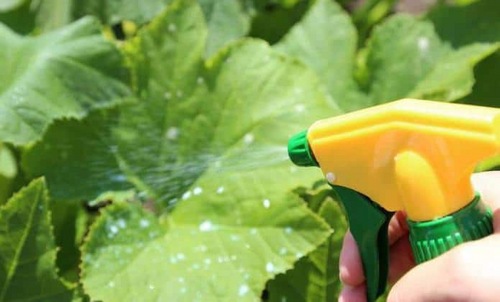
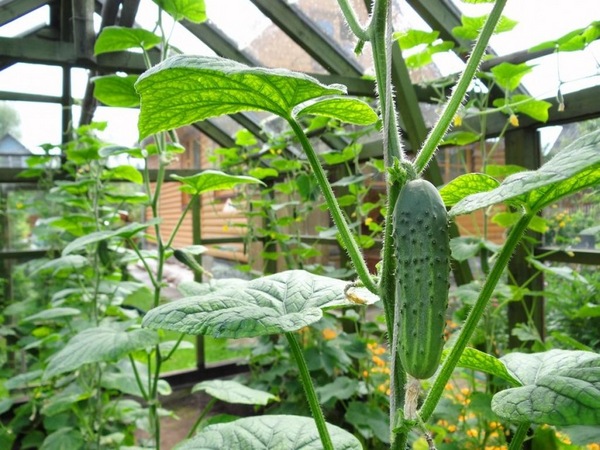
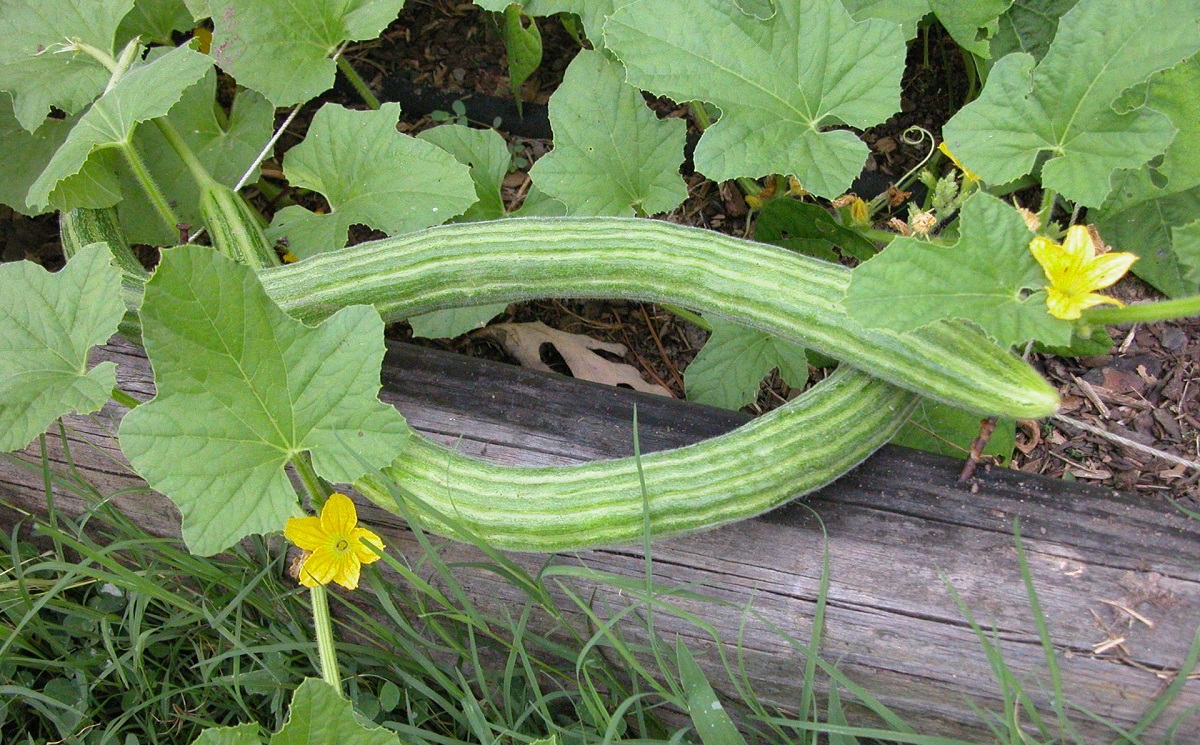 Armenian cucumber with melon flavor: description and characteristics, reviews
Armenian cucumber with melon flavor: description and characteristics, reviews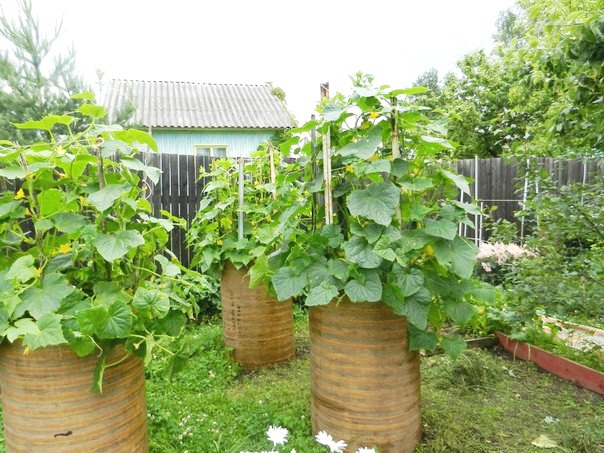 Do-it-yourself vertical beds for cucumbers: schemes, photos
Do-it-yourself vertical beds for cucumbers: schemes, photos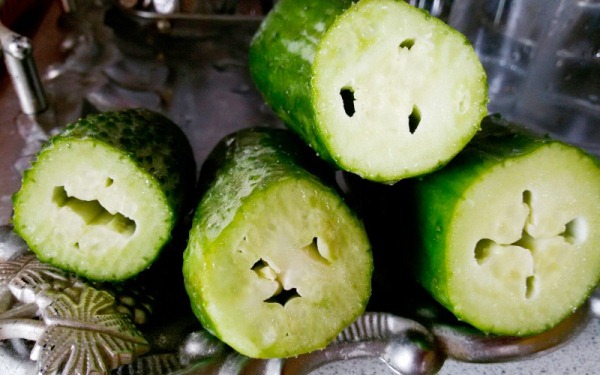 Hollow cucumbers: reasons for the appearance of hollow, what to do
Hollow cucumbers: reasons for the appearance of hollow, what to do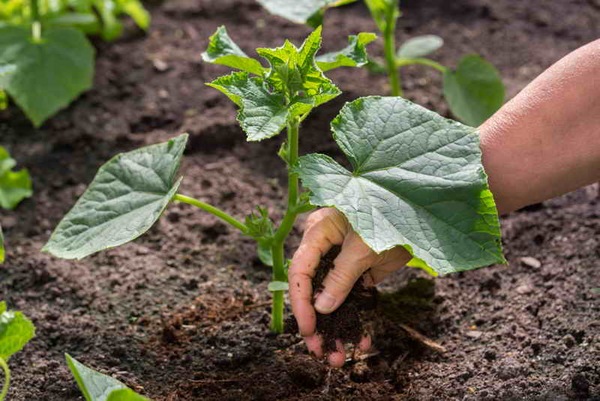 Which manure is best for cucumbers: application, how to breed
Which manure is best for cucumbers: application, how to breed